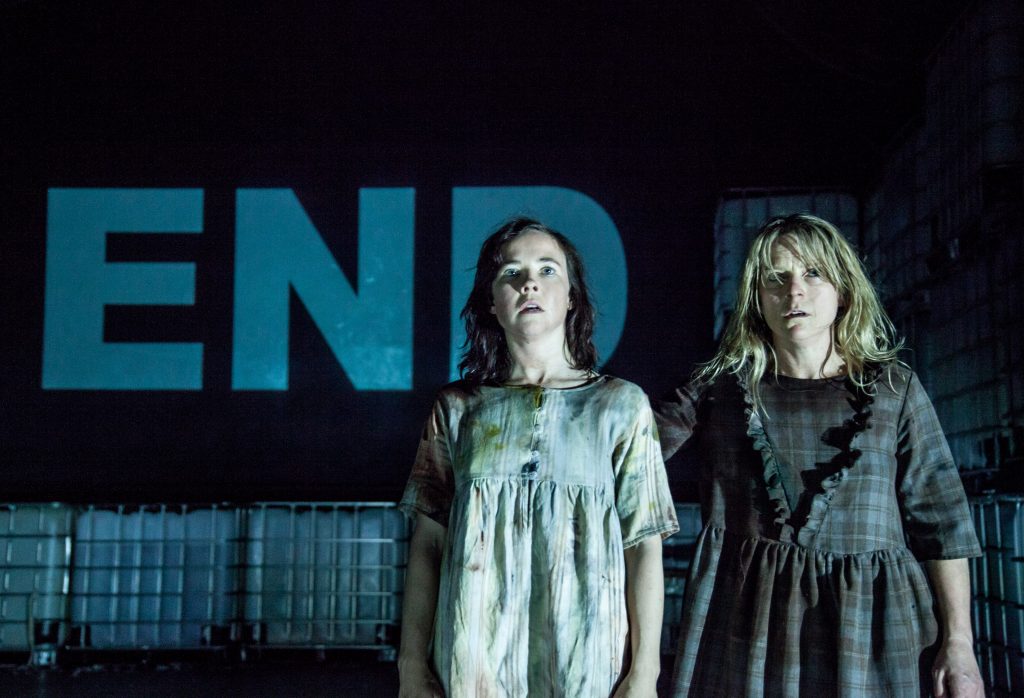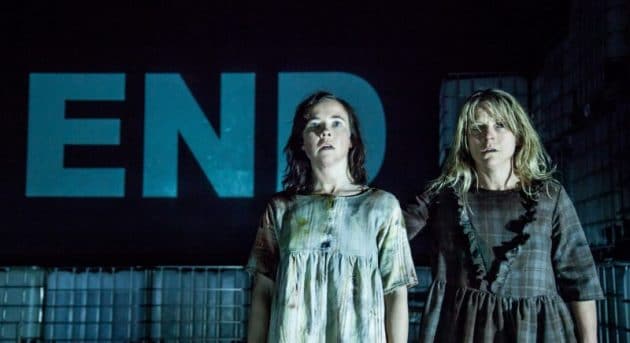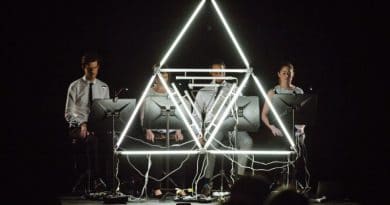Theatre Works: Animal
Witness me performing acrobatics (back and forth, back and forth) as I try to come to terms with Animal created by Susie Dee, Kate Sherman and Nicci Wilks.

Animal began its development six years ago. It started with an interest in the topic of domestic violence and grew into an exploration about women ‘on the edge’, about those who are stuck and unable to escape the relentless cyclical motion of violence. What does six years of development mean? Its means that the ideas have swelled sometimes beyond recognition and, like a cell or an organism, the work has adapted into an entirely different beast.
It’s impossible to say that I ‘saw’ Animal. This is not a work that lets you sit down, full-bellied and content to consume ‘a nice spot of theatre of an evening’. No. This work is an encounter. It’s a journey through a complex labyrinth complete with dead-ends, stairways that loop paradoxically and ominous chambers that appear to go on forever. It’s easy to lose your way, to drop what you thought the show was about and end up somewhere unknown and terrifying.
The design is fascinating: from the piles of feathers precariously placed in a net suspended from the ceiling – a few occasionally gliding down onto the stage – to the enormous water-storage units – like big plastic wombs filled with water – that tower over us. There is something both sacred and grotesque about this world. Some unknown, uncanny reality is made through the synthesis of penetrating sound, light and movement. Like those disturbing bumps in the night, we are confronted by violence primordial. As the action unfolds, these women contend. They fight. They transform into animals that hit each other, drown each other and dance in a series of eerie strip shows before an empty chair.
Already we are asking, who are they? Sisters? Wives? Lovers? The embodiment of a woman’s internal psyche (left and right hemisphere)? The Id? Whoever they are, it doesn’t take long for them to kill the male figure (God? The Father?), an invisible character that occasionally returns as a silent but threatening force. The violence is then redeployed and reconstituted (I think the Lacanian phrase is sublimated) between the women themselves. They assume, subsume and consume the violence inherent to the masculine archetype and begin to enact that same violence upon each other. In this way the work is reminiscent of The Rabble’s Cain and Abel. It seems to examine the way that violence itself is fundamental to the construction of female identity.
“Two sisters prepare for society. One punch at a time”
Animal is highly ambiguous, but there is a pleasure to be had from being lost in this swirling vortex of meaning. Angus Cerini’s text is projected as scene titles, striking in its poetic madness, but not enough to give the work a spine that we can follow (and here I leave myself open for criticism: for hinting that I simply desire a nice story, constructed in the dramatic form to which I am accustomed, of rising action, climax, denouement (which is only a case of me projecting my sexual desire onto the structure of theatre itself). There are times when the work refuses to give me tools with which to understand it; it doesn’t always provide the rules of the game. I mean the work itself is constituted by games. There are rules, nuanced and detailed, to every scene. But we are not always privy to them, which makes it difficult to appreciate precisely what it is we should be appreciating.
But then another voice booms in my head: who cares if it isn’t signposted? The themes being presented are so complex that any act of simplification for the sake of clarity might destroy the nuance, the development into new unexplored areas. The work would then end up telling us what we already know. It would no longer charge us to look beneath the curtain to see what’s behind it. Doesn’t the ambiguity in the work remind us of Hegel’s age-old statement, that behind the curtain of official text meaning is only what you make it? And yet another voice: perhaps because I am a man, I didn’t entirely understand it (did I?). There are some things that cannot be reconciled, some experiences I will never have and things that I will never be able to empathise with. A work that deals with the socialisation of women through violence – how could I possibly approach that from my own experience? Impossible. I can only observe, read and discuss the issue with my peers.
So I fall into an infinite loop thinking about the work, forever anxious (in that specially anal neurotic way) to find all of the meaning that’s embedded in it. I replay the work in my head, I reiterate it and reconstruct it. Forever asking myself the question: how deep did that rabbit hole go? Needless to say, Animal is a piece that gets right under your skin. None of which could have been pulled off without some seriously detailed performances. Not only are the movements precise, the images layered with meaning, but the rhythms that Sherman and Wilks’s bodies make as they move through the space are captivating.
This is a loud voice. It’s a shout, a scream of ENOUGH. JESUS CHRIST. WHEN WILL THIS VIOLENCE END?
It’s a contemplation of violence in its sticky, sickly, monstrous dimension. It’s a guttural and furious response to a phenomenon that’s gone on too long.
And it sticks in your brain like a parasite.



